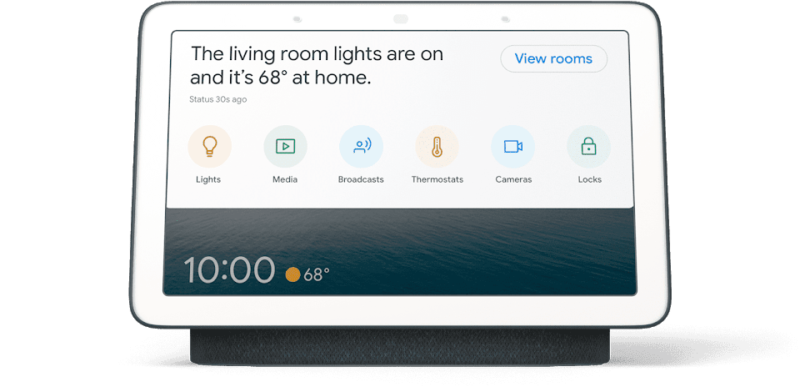A Google smart display with radar-based sleep tracking is reportedly happening

Enlarge / The current Google Nest Hub.
A "sleep-tracking smart display" sounds like something you might come up with if you were pulling tech product buzzwords out of a hat, but that is the latest Google product rumor on the always-reliable 9to5Google. Earlier this week, a new Nest product hit the FCC with Project Soli onboard, and after some digging, 9to5's sources now say it's for a new Nest Hub smart display with sleep tracking. I guess the idea here is a bedside alarm clock that will scan you with radar waves while you sleep.
The Project Soli support revealed in the FCC filing is a tiny radar chip Google developed in-house for gesture sensing. The chip has been in development for at least six years now from Google's ATAP group and has yet to be commercially successful. The original promise was that Soli would be able to detect fine finger movements like the virtual tapping of a button or turning of a dial, but the commercial models have never approached this level of fidelity. Soli debuted on the Pixel 4, where it could only detect large hand movements, and it was enough of a failure that it didn't make it to the Pixel 5. The chip is currently in the new Nest thermostat, but it only replaces the old motion sensor and does not seem to provide any new capabilities or improved features.
Google's partners have pitched the idea of a Google Assistant smart display as a bedside alarm clock, most notably in the Lenovo Smart Clock, but Google itself has not made one. Some of Google's smart displays come with cameras for video calls and face ID, but it's easy to imagine consumers balking at putting a camera in the bedroom. Soli radar would let Google track user movements without seeing the gruesome details. Today Google smart displays and speakers use ultrasonic sonar for some basic presence detection, but it's possible Soli could provide greater fidelity.
Read 3 remaining paragraphs | Comments